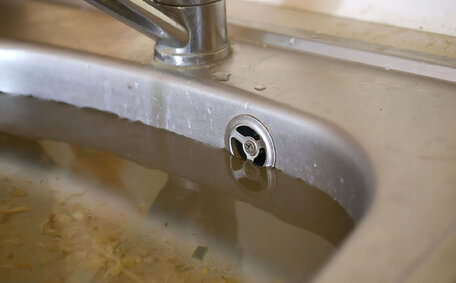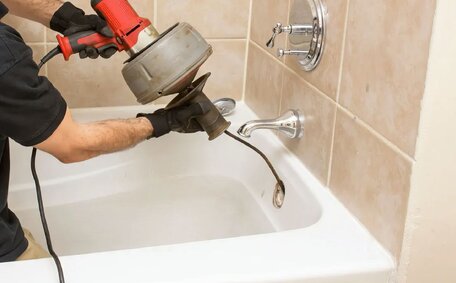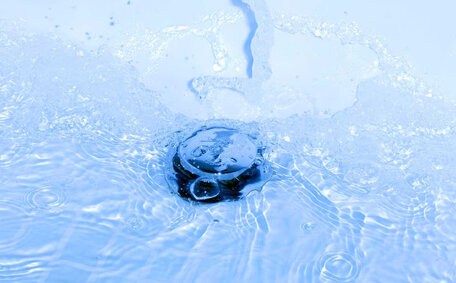What is Trenchless Relining?
Trenchless relining repairs underground pipes without excavation, preserving landscapes and infrastructure. It involves creating a new pipe by inserting a specialised liner inside the existing pipe. This liner creates a seamless new pipe within the old one, fully functioning as a replacement.
A 'no-dig’ approach utilises CCTV cameras to evaluate damage and navigate the relining apparatus through pipes. The liner is then expanded to fit the inner walls of the existing pipe using hot water, air pressure, or UV light.
After curing, the liner forms a smooth, joint-free and durable new pipe within the original structure.
Compared to traditional open-trench pipe replacement, trenchless relining is less disruptive, faster, more cost-effective, and better for the environment as it generates less waste and site contamination. Gardens, driveways, and roads remain intact, avoiding the need for disruptive digging. With drain pipe relining, your property stays cleaner and daily life is less impacted.
Overview of the Trenchless Relining Process
The trenchless relining process involves several key steps:
- A trained technician will first assess the pipe damage using a remote-controlled CCTV camera that is fed through your pipes.
- The exact measurements and details of the pipeline are recorded.
- A custom-fitted epoxy resin liner material, usually a fabric tube soaked in resin, is then prepared to match your pipe dimensions.
- The liner is then fed into the pipe and expanded against the walls using hot water or steam.
- The resin is allowed to cure, usually taking a few hours to set fully, forming a durable new pipe firmly bonded to the old pipe walls.
- Service connections are reinstated robotically by drilling out the liner at junctions or with liner patches over entry holes if needed.
- A final CCTV inspection checks the quality and restores services.
Advancements in CCTV, robotics and resin materials have made trenchless drain relining an extremely effective 50 to 100-year solution. It now repairs around 90% of damaged pipelines in developed countries like Australia without lengthy disruption or major restorative works.
Cleaning and Inspecting the Pipes
High-pressure water jetting thoroughly cleans the drain pipes before the relining commences. This blast of water scours the pipe walls to remove debris, roots, grease buildup and corrosion that could affect liner bonding.
Effective cleaning is critical to prevent contaminants from being trapped under the new pipe surface post-relining. If not addressed, this could lead to future blockages or liner separation issues that may damage your plumbing system.
Once cleaned, a remote-controlled CCTV camera is fed through the pipes to inspect their condition in detail. Using the live video feed, our technicians will assess:
- Locations and severity of cracks, holes, root ingress or other damage
- Exact pipe lengths and diameters
- Presence of lateral connections or junctions
- Integrity of pipe materials
A meticulous CCTV inspection allows us to grasp the extent of the damage, enabling the creation of a tailored liner for your pipes. It also serves as a before and after record of the restoration works.
Both the high-pressure clean and CCTV inspection are essential prerequisites in the trenchless relining process. They enable our technicians to develop the best repair strategy and liner design for your unique pipe layout and damage profile.
Installing the Cured-In-Place Epoxy Liner
Once the existing pipes are cleaned and assessed, it’s time to insert the custom-fabricated Cured-In-Place (CIPP) epoxy resin liner.
This flexible fabric tube is soaked (impregnated) with a specially formulated 2-part epoxy resin. Our technicians feed the collapsed liner, which is then inserted into the pipe, usually from an existing manhole or access point.
An inflatable rubber bladder is inserted inside the liner in the existing pipe structure. Inflating the bladder with water or air presses the liner against the pipe walls, sealing defects.
We maintain this pressure for several hours as the epoxy resin begins to cure and harden. Hot water circulation or steam is sometimes used to accelerate and control resin curing times. The inflatable bladder is finally deflated and removed once the liner is fully hardened inside old pipe walls.
CIPP epoxy relining allows for seamless repairs of pipes underneath buildings, roads and sensitive areas where open excavations are difficult, dangerous or prohibited. The liner’s flexibility allows it to navigate and repair bends and junctions unreachable by rigid pipes.
This robust cured epoxy layer restores structural integrity, provides leak protection, resists chemical attack and effectively serves as the main sewer line’s new internal wall. With proper installation, CIPP liners located under various landscapes have a verified lifespan of 50+ years.
Curing the Liner to Form a New Pipe
Once the resin-saturated CIPP liner is correctly positioned, the next vital step in the relining method is curing the epoxy resin to solidify the liner and form a durable new pipe.
Steam, hot water, or UV light uniformly cures the resin within the liner. Steam accelerates curing and enables better resin saturation while hot water circulation ensures even heat distribution. We carefully monitor temperatures and curing times.
Ambient temperature resins are also available which negate the need for hot water or steam. However curing takes much longer, usually over 8 hours.
Controlled curing transforms the soft, impregnated fabric into a hard, jointless pipe robust enough to withstand internal pressures and external loads. This seamless, corrosion-resistant epoxy barrier renews the pipe’s structural integrity for decades.
Correct curing methodology is critical to realising the designed 50-100 year lifespan of the CIPP liner. Our trenchless specialists fine-tune these parameters to deliver optimal resin polymerisation while keeping disruption minimal.
The end result is a like-new pipe-within-a-pipe restoring full functionality with minimal surface impact – no digging or ground destruction required!
Benefits of Trenchless Relining
Trenchless relining offers numerous advantages over conventional open-trench pipe replacement. It saves substantially on costs with projects typically more affordable than traditional methods since no excavation or surface demolition is needed. There is also less business disruption with most repairs taking only 1-2 days versus weeks for standard methods.
The process generates minimal waste while avoiding environmental contamination from soil removal or pipe exposure. The durable epoxy resists corrosion, abrasion, roots and chemicals - outlasting traditional pipe materials several times over.
Sewer gases stay fully contained as well. CCTV inspections pre and post-lining provide quality assurance.
With less heavy equipment required onsite, relining is safer for workers and the public while reducing noise, dust and traffic impacts. It restores your drain pipe repair capacity and water pressure too by smoothing internal walls and clearing blockages. Trenchless solutions can reinforce structurally deficient pipes at a fraction of replacement costs.
Cost and Time Savings
Trenchless relining offers significant savings in cost and time compared to traditional pipe repairs. By negating nearly all excavation works, projects cost 30-50% less on average.
Materials are also minimised as the existing pipe is restored instead of removed and replaced. There is less equipment and labour needed onsite with crews typically smaller by 30-50%. Specialist access such as confined space entry and sheet piling/shoring are avoided too.
Repairs are typically completed in just 1-2 days, in contrast to the weeks or months required for conventional dig-and-replace methods. This means vastly reduced downtime and disruption for residences and businesses.
Flow-on savings apply in areas like landscaping, concrete and asphalt replacement which increase exponentially on fully dug up sites. Overall, opting for trenchless relining over traditional pipe replacement methods provides superior value for money and much faster repairs.
Minimal Disruption and Environmental Benefits
One of the biggest perks of trenchless relining is how minimally disruptive it is, especially compared to traditional pipe replacement methods. Since no excavation or ground-breaking is involved, daily life is less impacted for both residential and commercial settings.
Gardens, driveways and landscaped areas remain fully intact. With no jackhammering or use of heavy machinery, noise, dust and site contamination are avoided above the main sewer. Sewer gases stay safely contained as well.
In urban areas, traffic flow and parking access suffer minimal interference. No roads need re-surfacing post-works either. The public enjoy much safer worksites with less tripping hazards and no open trenches.
Environmental benefits apply too. With very little waste generated or trucking needed, the carbon footprint is greatly reduced. Soil ecology stays undisturbed as well since pipes are restored from within rather than dug up and disposed of.
The seamless PVC or epoxy liners used are also non-toxic, durable and recyclable. They prevent further environmental contamination from leaks in degraded pipes. Overall, trenchless relining delivers major advantages in site disruption, rehabilitation costs and sustainability.
Considerations for Trenchless Relining
While trenchless relining has numerous benefits, there are some considerations to keep in mind when determining if it’s the right solution:
- The existing pipe material needs to provide an adequate structural base for the liner. For example, severely corroded metallic pipes may be too degraded.
- Nearby utility infrastructure could also be impacted during installation, especially when reconnecting lateral pipes or sharper bends.
- Pipes that have fully collapsed or are heavily blocked with hard debris may not be good candidates for lining. These obstructing materials can’t be easily removed prior to insertion.
- Grade adjustments may be needed on sloped pipes over 100 feet to accommodate the liner thickness and reprofile capacity. Steep slopes above 10% gradient may also prove challenging.
- While extremely rare, there is a small risk existing asbestos cement pipes could crack during the relining process. We’d advise replacement in such scenarios especially if the integrity of the pipe been compromised.
Our trenchless specialists will inspect the pipes first and advise if lining is unsuitable, answering any queries such as 'do I need a complete replacement?'. For severely damaged drains, a partial repair/replacement may be recommended instead. We’re happy to discuss suitable alternatives that balance costs and practicality.
Frequently Asked Questions
What exactly is trenchless relining?
Trenchless relining is a pipe restoration method that involves inserting a liner soaked with epoxy resin into damaged plumbing or sewer pipes to create a new pipe inside the old one. This provides an efficient sewer repair solution for broken or clogged pipes without having to dig trenches or break up flooring and driveways.
How do you know if my pipes are suitable?
Technicians initially perform CCTV inspections to determine the practicality of trenchless pipe lining. Generally, sewer lines that maintain structural integrity without full collapses or extreme blockages can be strong candidates for relining. The pipe material and layout like bends are also reviewed.
What are the key benefits?
The primary advantages are:
- Cost savings of 30-50% over pipe replacement
- Much faster turnaround times of 1-2 days
- Minimal surface disruption - no jackhammering or trench digging needed
- Enhances water pressure and flow by eliminating obstructions
- Long lifespan of 50+ years
How much does trenchless pipe relining cost?
Relining costs vary with factors like pipe size, length, material, and complexity. As a guide, relining a standard 50mm residential sewer pipe starts from $2,500 whereas a commercial 300mm stormwater drain could be $25,000+. Please call us for an obligation-free quote.
Is this method suitable for commercial buildings too?
Indeed, trenchless relining is commonly used for pipe restoration in factories, offices, apartments, and shopping centres. We work closely with strata and facilities managers to minimise downtime and disruption.






